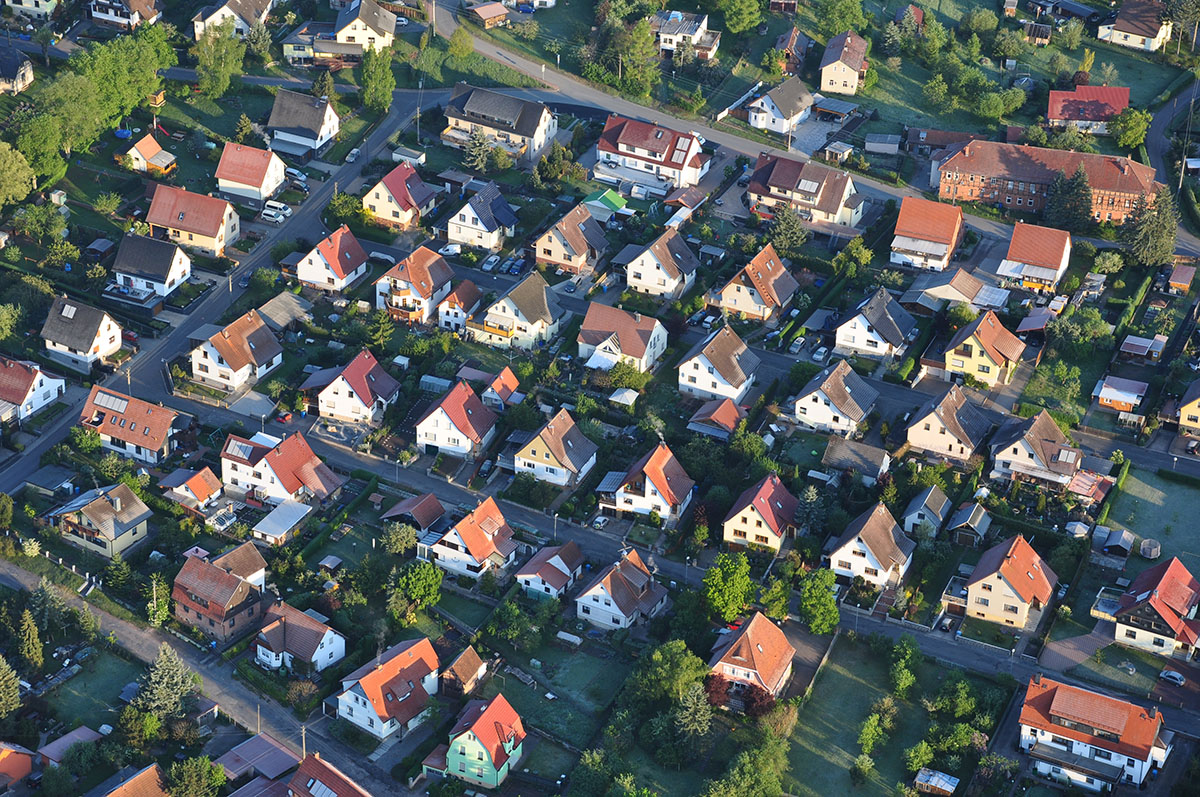This content is also available in: German
A heat pump revolution for Germany
From 2024, every newly installed heating system is to be run on 65 percent renewable energy - as decided by the German government in March 2022. What are the most urgent tasks on the German government's To-Do list for achieving this ambitious goal?

There is a significant gap between ambition and actual emission reductions in the buildings sector in Germany: for two years in a row, the buildings sector has exceeded the greenhouse gas emissions limits as specified in the climate protection law. Even the emergency climate protection programme presented in July 2022 falls short of presenting an emissions reduction trajectory that is compatible with the targets. To achieve the objectives, climate policy in the buildings sector must now focus on three things: making up for the backlog in the retrofitting of buildings to reduce energy consumption; accelerating the shift to renewables in district heating; and pressing ahead with the replacement of millions of fossil oil and gas-fired heating systems by heat pumps. Still every year, around 700,000 new boilers running on fossil fuels are being installed; causing more than four million tons of CO₂ emissions each year. With a lifespan of 20 to 30 years, these new boilers are undermining the goal of climate-neutral heating by 2045. Yet weaning the country off fossil fuels for heating is now more urgent than ever: against the backdrop of Russia's war on Ukraine and the fossil fuel crisis, a rapid reduction in oil and gas consumption is crucial both for achieving Germany’s climate targets and for ensuring an affordable and secure energy supply.
A key measure for replacing fossil fuel-based heating systems with climate-friendly alternatives is the so-called 65 percent regulation. It states that every new heating system - whether in new or existing buildings - must be run on at least 65 percent renewable energy. As decided by the coalition in March 2022, the regulation will become effective already in 2024, one year before the date set in the coalition agreement. In order for the regulation to be effective for the achievement of the climate targets, there is an urgent need for rapid and ambitious implementation.
What a heat pump revolution needs
Policymakers need to create a policy framework that supports the market ramp-up of heat pumps: starting in 2023, around half a million heat pumps need to be installed each year to reach the goal of six million heat pumps by 2030. This heat pump revolution can only succeed if there is a radical departure from "business as usual" through swift action, large-scale investments, and enhanced implementation capacity. Policymakers urgently need to create an environment that allows long-term planning and thus enables the ramp-up of capacity along the value chain - from manufacturing to planning agencies. To make sure there are enough skilled workers for the installation of heat pumps, skill centres for heat pumps need to be established and apprenticeships need to be adjusted to the new requirements. Additionally, installers need funding for heat pump training courses.
Grants and other support programmes will also have to be adapted to meet the new regulation: it is crucial to make sure that all households can afford replacing their heating systems. Likewise, policies shall support specifically the installation of heat pumps in buildings with historically low rates of deployment, such as apartment buildings or buildings with communal heating systems. Biomass-based heating systems, however, should only receive support in exceptional cases.
In addition, a clear policy signal is needed so that manufacturers, skilled workers, consumers and other market actors collectively ensure to remove all major obstacles by the time the 65-percent regulation comes into force on January 1, 2024. This can be achieved by making the 65 percent regulation a law. Delaying this process will only increase the effort required later on to achieve energy sovereignty and climate neutrality.
To create strong momentum in the market roll-out of heat pumps, the electricity price must be cushioned by exempting heat pumps it from surcharges. In addition, regulatory barriers need to be removed: permits and local regulations can pose major hurdles and vary considerably between municipalities. This applies to approval criteria for drilling geothermal probes as well as to spacing rules for the installation of air-to-water heat pumps and provisions relating to the exploitation of other heat sources.
Why heat pumps and district heating networks must be given priority now
The 65-percent regulation ultimately seals the deal on phasing out oil and gas boilers. Simply supplementing a conventional boiler with a solar thermal heating system, is not sufficient for meeting the renewable energy requirement for the operation of heating systems. With the phase-out of fossil-fuel heating, heat pumps and renewables-based district heating grids become the main sources of heat supply on the way to climate neutrality in 2045.
Heat pumps are a suitable option across a very wide range of buildings and circumstances, as the interim results of a study by Agora Energiewende and its partners Öko-Institut and Fraunhofer ISE show. The technological progress of recent years has significantly expanded the scope for their application: For example, heat pumps now work efficiently in buildings that have only been partially renovated. Importantly, hybrid heat pumps – which operate in conjunction with fossil fuel-based heating systems – in most cases have no economic or ecological advantage over regular heat pumps.
Heat pumps also have significant advantages over alternatives such as pellet heating or biomethane: sustainable biomass will be expensive and/or scarce in the foreseeable future, as it is needed more urgently in other, difficult-to-decarbonise areas, such as several industrial applications. Thus, there is no case for large scale use of bioenergy in heating. This should be accounted for in the 65 percent regulation by allowing the use of biomass only as an exception. The same applies to the use of green hydrogen. Due to limited availability and efficient existing alternatives in buildings, it should not be used to meet the 65-percent regulation.
Furthermore, heat pumps and district heating networks are an ideal combination: in urban areas, they connect a large number of consumers and heat sources. That way, waste heat, solar thermal and geothermal energy can be effectively utilised. Large heat pumps also play an important role in district heating networks. It is thus crucial to quickly convert district heating systems currently based on fossil fuels to green energy sources.
Looking ahead to 2024, enshrining the 65 percent regulation in law now needs to be a top priority for the German government. It is the cornerstone for aligning the heating market with the climate targets and at the same time freeing Germany from its dependency on fossil fuel imports.



